#Enma-daiou
Explore tagged Tumblr posts
Text

This lovely oc belongs to @sunnyskies281 I'm so sorry this took so long I kinda forgot ngl lol. I do hope you like it :3
9 notes
·
View notes
Text
Ojarumaru Anime Overview

Before I get started with this overview, I want to clear up a common misconception I’ve noticed in some English sources about Ojarumaru. The anime is an original production– not an adaptation of a pre-existing manga. While there are some manga versions, these were created to accompany the anime rather than serve as its source material. For example, Kanako Temaru’s manga version ran in Ciao magazine from the November 1998 issue until the September 2001 issue. Some sources mistakenly claim the serialization began in 1993, but that’s incorrect.
Ojarumaru was created by manga artist Rin Inumaru (her real name was Noriko Yamazaki) and produced by NHK and NHK Enterprises. Gallop (Kiteretsu Daihyakka, Nurse Angel Ririka, KochiKame, etc,) is the primary animation studio. Inumaru oversaw the original story for the first 4 series and later served as an advisor from the 5th to the 9th. Little is known about what directly influenced its creation, but it’s possible that an NHK executive discovered her early work and approached her about creating an anime series for them. Before Ojarumaru, Inumaru had worked on manga (Yubikiri Genman and Nandemo Tsukame), essays (Yakisobapan no Shisou), and picture books (Kaerukaba: Boku wa Oku-san ga Sukide Sukide Tamaranai), though details about her career remain limited.
Sadly, she passed away in September 2006. Reports indicate that she fell from the roof of her 14-story apartment and was pronounced dead at the hospital. She left a note addressed to her mother, expressing feelings of inadequacy about her work. An anonymous acquaintance suggested that ongoing stress related to a fluctuating health condition may have contributed to her passing.
Ojarumaru premiered on NHK Educational TV (NHK E) on October 5, 1998. Every year, a batch of 60-90 episodes airs daily, bringing the total to 2,100+ episodes split up into 28 series with more in production. This makes it NHK’s second longest-running anime, behind Nintama Rantaro. The show follows a structured broadcast pattern: new episodes air from April to June and October to December, while reruns take place from June to September and December to March. Instead of following the annual theatrical movies trend common in long-running kids anime (Doraemon, Crayon Shin-chan, Soreike! Anpanman, Shimajiro, etc.), made-for-TV specials air every few years, notably during a milestone anniversary. The latest one, a collaboration between Ojarumaru and the live-action Taiga drama Hikaru Kimi e, aired in October 2024. A movie, Eiga Ojarumaru: Yakusoku no Natsu Ojaru to Semira, was released in July 2000, but it’s rarely publicized nowadays. I’ll save details of the movie for another post at a later time.






Unlike some other long-running kids’ anime such as Anpanman, Shin-chan, and Doraemon which show noticeable differences between older and newer episodes, Ojarumaru has maintained a consistent art style and format for nearly 30 years, with only minor tweaks. The above episode screenshots demonstrate the art evolution. It was NHK’s first digital anime production and never underwent a film-to-digital transition, using digital ink and paint animation from the start instead of painted cels. Initially produced in 4:3 aspect ratio, the show switched to 16:9 for the 5th series (aired in 2002)–earlier than many anime produced during the early 2000s. However, it continued airing in 4:3 until 2007 when NHK E began airing the episodes in native high definition from the 10th series onwards.
The show follows Ojarumaru Sakanoue, a mischievous young prince who grows bored of his rigid aristocratic life in the Heian era’s Fairy World. He resents being forced to study and is especially displeased with his arranged marriage to the bubbly Princess Okame. One day, while exploring Enma Forest—named after the strict Enma the Great (Enma Daiou, Great King Enma, or King Enma)—he stumbles upon a pink scepter that Enma uses to quickly judge the fate of the dead, sending the good to heaven and the bad to a lecture room for reprimands. Ojarumaru steals the scepter but accidentally falls into the Moon Hole, a deep, water-filled rock that serves as the gateway to the Full Moon Road, transporting him a thousand years into the future (modern-day Japan).
Arriving in Moonlight Town, he is taken in by the Tamura family—athletic 7-year-old Kazuma, his inventor grandfather Tommy, nurturing housewife and supermarket part timer Ai, and laid-back salaryman Makoto. As he adjusts to modern life, Ojarumaru explores the town, meets its quirky citizens, and occasionally encounters figures from the Heian era, such as his devoted firefly caretaker Denbo. He also frequently clashes with the Little Oni Trio—Aobei, Kisuke, and Akane—who have been sent by their father, Enma, to retrieve the stolen scepter. Though they appear aggressive, the oni are ultimately kind-hearted and only chase Ojarumaru out of deep commitment to their mission.
Each episode runs for 10 minutes, consisting of a 1:30 opening theme, a 7:30 episode segment, and a 1:00 ending theme. The stories typically revolve around Ojarumaru discovering aspects of modern life unfamiliar to him—such as telephones—meeting the residents of Moonlight Town, confronting his own personal flaws, celebrating holidays, or playing games with his friends. Occasionally, he returns to the Heian era to visit his parents and his cow friend, Ushi (literally “Cow”), or to take part in an event from that time period. Some episodes transport the characters into fairy tales like Momotaro and Journey to the West, parody famous series such as Columbo and Attack on Titan, or place them in entirely new scenarios, adding variety to the show’s episodic adventures.
Much of the show’s humor comes from the speech quirks of both Heian-era and modern characters. For example, Ojarumaru’s language is deliberately archaic—he refers to himself as “maro” instead of the more common “watashi” or “boku” and frequently ends his sentences with “de ojaru” (a polite copula meaning “to be”). His old-fashioned mannerisms often clash with the modern world, creating comedic misunderstandings.
Repetition plays a significant role in the show through running gags, music, and character quirks. The nostalgic opening theme, Yomibito, serves as a leitmotif for some of the background music. Many characters, including Ojarumaru, Denbo, the Little Oni Trio, Enma the Great, and Princess Okame, have their own signature themes that play when they enter a scene. The oni trio, when confronting Ojarumaru, always stack into a totem pole-like formation before leaping into a horizontal pose while chanting. Denbo frequently develops crushes on various animals, insects, and even talking objects, while part-timer Ken is perpetually caught in a cycle of being hired and fired from different jobs. Manga artist Sachiyo Usui constantly suffers from writer’s block, and salaryman Kawakami is always too late to catch his bus to work.
Most episodes are self-contained, allowing them to be watched in any order. While extensive continuity is rare, there are small story arcs—such as the first 3 episodes establishing Ojarumaru’s new life in Moonlight Town and his ongoing rivalry with the Little Oni Trio. Later episodes occasionally recap key plot points, like Ojarumaru stealing Enma’s scepter, through flashbacks. Although the show is designed for newcomers to jump in at any point, it does assume some familiarity with character dynamics established early on, which may be confusing without prior context. From my experience, there are a few ways to navigate this: tracking down older episodes, reading episode summaries, or gradually learning about the characters and story through repeated viewing.
Series director Akitaro Daichi incorporates a distinct directorial style that has remained consistent throughout Ojarumaru’s long run. His approach emphasizes a relaxed, slice-of-life atmosphere with gentle humor, moments of silence, and a strong focus on character interactions. Rather than relying on exaggerated action or rapid-fire gags, Daichi builds the show’s charm through subtle expressions, conversational timing, and whimsical moments.
Transitions are seldom used, with cuts being the primary method of shifting between scenes. A common visual cue for the passage of time is Ukulele-san playing his ukulele. When transitions do appear, they are mostly dissolves, while wipes and clock wipes are exceedingly rare—so much so that one would have to search carefully to find an episode that uses them. These creative choices likely serve to maintain the show’s slow, dialogue-driven pacing and its emphasis on mood over plot progression.

A notable example of Daichi’s style comes from the last scene in 1st series episode 62 "Otome-sensei Hakuchou ni Narikiru" (乙女先生 白鳥になりきる, "Otome-sensei Completely Becomes a Swan"), where ballet dancer Otome forgets how to dance after trying to understand a swan’s feelings by “not thinking about anything.” The production staff debated how Ojarumaru and the others should react to her realization, ultimately deciding on a complete lack of response. This absence of reaction serves as the punchline itself rather than relying on exaggerated expressions or dramatic music cues.
When Daichi handles both the screenplay and storyboard for an episode, his distinctive style becomes more pronounced, making these episodes feel like “special installments”. His direction often plays with tone, pacing, and animation style in unique ways. For example, 12th series episode 1 presents a “dramatic showdown” between Ojarumaru and the Little Oni Trio, complete with tall grass swaying in the wind, heightening the tension in a way uncommon for the series. The 19th series’ 1st and 65th episodes, "Ojaru 17" (おじゃる17) and "Ojaru 17 VS 5 Miyabi na Kettou" (おじゃる17VS5 ミヤビな決とう, "Ojaru 17 VS 5: The Elegant Duel")–guest starring the mysterious teenage Ojaru 17–stand out with slightly faster pacing, exaggerated facial expressions, and even sakuga-esque moments, adding an extra layer of energy. On the other hand, 20th series episode 1 "Maro to Kazuma no 20-nen" (マロとカズマの20年, "Me and Kazuma's 20 Years") takes a quieter, nostalgic, and heartfelt approach, depicting Ojarumaru getting upset over Kazuma being too busy for him and they later make up.
Another highlight is the music. Composer Harukichi Yamamoto’s score covers a wide range of moods, from relaxing and upbeat to suspenseful and mystical. His compositions are highly memorable, with many pieces from the show's 1998 debut still used in newer episodes, reinforcing their timeless quality. While several soundtrack CDs have been released, they only feature the most commonly used tracks, with the last one released in 2006. This means any music composed afterward remains unreleased on CD. Additionally, none of the full background music is officially available for streaming on platforms like YouTube, Spotify, or iTunes. As a result, fans seeking specific tracks not included on the CDs would have to resort to using software to isolate the music from dialogue.
Despite its long-running popularity in Japan, Ojarumaru has struggled to establish itself internationally. While some episodes have aired in parts of Asia and Europe–including Hong Kong (Fǎn Dòu Xiǎo Wángzǐ 反斗小王子 and Xié Liú Wán Wángzǐ 邪留丸王子), Italy (as Mack, ma che principe sei?), Spain (El principe Mackaroo), the Philippines (Prince Mackaroo)–as well as the Middle East (Faris Alhakaya فارس الحكايا), all international dubs have since been discontinued. The show has maintained a small cult following in certain regions, particularly in Hong Kong (where the Cantonese dubs remain widely circulated among fans and has been released on VCD), India (where the Hindi dub is now considered lost media), and Italy (where it’s remembered for its theme song by Cristina D’Avena, a prolific artist known for performing numerous theme songs for Italian-dubbed anime).
In the early 2000s, Enoki Films USA acquired the show’s international master license, rebranding it to Prince Mackaroo and Westernizing most of the character names (Denbo to “Cyber-fly”, Kazuma to “Cozmo”, Akane to “Scarlett”, etc.). This version served as the basis for some of the Asian and European dubs. An English dub was commissioned at Ocean Studios in Canada, but it was never released in any English-speaking country. All that’s known about it is that voice actors Saffron Henderson (Scarlett, Amy) and David Kaye (Cyber-fly, Demon King, additional voices) were involved. When Enoki Films USA ceased operations in 2010, the license was transferred to their Japanese headquarters where it has remained since. Years later, WowMax Next and Elastic Media Corporation produced an English dub of Ojarumaru Special: Hinata of the Forgotten Woods, but this too went unreleased with the only known dub staff being voice actor Finnigan Morris.
While the exact reasons for its international struggles remain unclear, possible factors include cultural differences, language barriers, target audience misalignment, and limited licensing support, as well as the show's format and availability.
The storylines and humor are deeply rooted in Japanese culture and wordplay. Much of the show's appeal lies in its nostalgic and whimsical depiction of childhood, its seamless blend of Heian-era references with modern settings, and its gentle, dialogue-driven humor. For instance, in 12th series episode 43 “‘Ru’” (「る」) , Ojarumaru speaks without the Japanese “ru” sound, transforming his usual verbal tic “de ojaru” into “de oja.” These elements make it comforting and familiar to Japanese audiences, but can be difficult for international audiences to fully appreciate without cultural context or willingness to turn off preconceived expectations.
Young Japanese audiences are naturally exposed to the cultural elements in Ojarumaru through their daily lives, making the show more relatable and easier to grasp. They also have access to age-appropriate resources that help them further explore the Heian-era references. In contrast, young audiences outside Japan—especially in English-speaking countries like the US—don’t encounter Japanese culture and history in the same way. Since these elements are not part of their everyday experiences, they may find them harder to understand, particularly if their parents or guardians are also unfamiliar with them. Additionally, resources for young children on Japanese history and culture are scarce outside Japan. Most available materials are aimed at older audiences or those specifically studying the subject—a demographic less likely to engage with a culturally-specific kids show they never grew up with.
While the show includes some Western references—such as Katapi the snail’s French origins, a batch of 5 episodes themed around London (which aired to coincide with the 2012 London Olympics), Tommy and his friend Mike occasionally speaking English, and Okorinbou the komainu falling in love with a foreigner named Jessica in 1st series episode 72 "Okorinbou ni Hanataba o" (オコリン坊に花束を, "Flowers for Okorinbou")—these elements serve more to romanticize the Western world for Japanese audiences (a common trend in kids anime) rather than to make the show more globally accessible.
As a public broadcaster, NHK operates under a unique funding model, primarily relying on mandatory license fees paid by residents in Japan with a television subscription, regardless of whether they watch NHK programs or not. This financial structure allows Ojarumaru to continue production without the need for extensive commercialization, which is why merchandise for the show is now sparingly produced. In its early years (1998-2007), the show saw more commercialization through merchandise and promotions, but this gradually declined over time.
Since international TV networks (or at least ones in the United States) tend to prioritize kids programming with strong commercial potential—such as toy and video game tie-ins—Ojarumaru's historical, slow-paced, and whimsical tone may not have aligned with their market interests. As a result, many likely opted to pass on the show or discontinue it midway, instead favoring series with broader global appeal such as Doraemon, Yu-Gi-Oh!, PreCure, and Jewelpet. Unlike Pokémon or Yu-Gi-Oh!, which built long-term merchandising empires around trading cards and toys, Ojarumaru’s merchandising has been more modest, focusing primarily on books, soundtrack CDs, and small-scale collectibles like gashapon.
Ojarumaru has never had a strong toyetic component to sustain international merchandising success. While other franchises feature collectible items, battle-ready characters or dedicated rescue teams, Ojarumaru’s closest equivalent—the Moonlight Town Tiny Things Club—consists of Ojarumaru, Denbo, turtle sisters Kame and Tome, Katapi, Kimiko the hamster, and Binbougami. While they occasionally embark on “rescue missions”, these are far more low-stakes and gentle compared to the high-energy action of Rescue Heroes or Paw Patrol.
Although a few video games were released in Japan during the early years—including a board game (Ojarumaru: Tsukiyo ga Ike no Takaramono), a mini-game compilation (Ojarumaru 〜Mangan Jinja no Ennichi de ojaru!〜), a 2D platformer (Ojarumaru: Gekkou-chou Sanpo de ojaru), and edutainment titles (Ojarumaru, Typing Ojarumaru)—they primarily catered to existing fans rather than serving as an introduction to new audiences. These genres generally don’t have the same standalone appeal or commercial longevity as action-adventure, mascot platformer, RPG, or collectible-based games that drive international success. Without a strong competitive, replayable element or a core gameplay hook to engage wider audiences, these games were less likely to generate lasting excitement outside Japan. As a result, they didn’t serve as an effective gateway for Ojarumaru to expand internationally the way other anime-based game franchises have.
While Ojarumaru could potentially stream on niche platforms like Crunchyroll or RetroCrush, or stream for free on YouTube or Tubi, there may be contractual barriers preventing its availability. Since the show has been running since 1998, the media landscape has changed significantly over the years, and it may still be bound by old contractual agreements that don’t account for international streaming, or Enoki Films/NHK may require a full licensing deal rather than just streaming rights. In some cases, licensors prefer to sell all rights to a single company rather than splitting them among multiple parties. Managing different rights across different companies within a single territory can be complex, and licensors may not want to risk missing larger opportunities by leaving certain rights unused. Additionally, the user base of niche platforms generally skews older and overlooks retro kids anime unless it’s something they grew up with (Pokémon, Beyblade), ties into a modern reboot (the Osomatsu-kun 1988 series was licensed by Discotek Media in response to the international popularity of Mr. Osomatsu) or well-known property (Sonic X being based on the Sonic the Hedgehog franchise), or has clear older-audience appeal (Cardcaptor Sakura, PreCure).
Although Ojarumaru has had several home media and streaming releases in Japan, only a fraction of the series has been made accessible—around 466 episodes on VHS, 160 episodes on DVD and even fewer for streaming. NHK limits the availability of past content to encourage domestic viewers to tune in live or catch up through limited-time video playback streams on NHK Plus and NHK On Demand. This keeps the focus on newer episodes rather than capitalizing on nostalgia through extensive home media and streaming releases.
In Japan, newer episodes are readily available on NHK platforms (NHK E, NHK Plus, NHK On Demand), while older episodes can be found on third-party services like U-Next and Hulu Japan. However, international audiences don’t have this luxury of accessing the show. These platforms are geo-blocked outside Japan, requiring workarounds for “unofficial access” to temporarily-available official content. The lack of a modern release on official streaming platforms or networks internationally further widens the gap in accessibility. A small handful of episodes—mainly from discontinued international dubs—have been uploaded by fans online, but these are subject to takedowns. Your best bet for permanent accessibility is the home media releases.
That’s not to say Ojarumaru will never see further global expansion. It would require passionate licensors and distributors—or even NHK—who are committed to making it happen and have the necessary time and resources to do so.
For an English localization, the Heian-era characters could speak in Shakespearean English to emphasize the comedic contrast between ancient and modern speech. Some of the more sincere dialogue and Japanese-based puns could be rewritten to sound witty and natural in English. Not all 2,100+ episodes would need localization; depending on how the episodes are packaged and how much flexibility Enoki Films/NHK allows licensees, a curated selection from various years could highlight the show’s evolution or focus on episodes with fewer culturally-specific elements.

A strong candidate for localization is 9th series episode 1 "Ashita Koso" (あしたこそ, "Tomorrow For Sure"), where the Little Oni Trio attempt to use the Full Moon Road to repeatedly travel forward in time and gather their future selves, forming a larger group to intimidate Ojarumaru into giving them the scepter—only for their plan to go comically wrong. This episode features slightly faster pacing and a greater use of the show’s suspenseful background music, which is otherwise used sparingly. Episodes written and storyboarded by Akitaro Daichi, such as the Ojaru 17 episodes, would also be excellent choices.
The show’s popularity in Japan can be attributed to several factors: the rarity of an aristocratic Heian-era main character in animation (a quick Google search for "de ojaru" (でおじゃる) will bring up the show among the top results), its distinctly Japanese humor, and nostalgia. Since its debut, Ojarumaru has aired daily in the mornings and/or early evenings as part of NHK E’s children’s programming lineup. For many years, it held a consistent 6:00 PM timeslot, directly preceding Nintama Rantaro at 6:10 PM, until a schedule shift in 2022. The show’s association with Nintama Rantaro was even playfully acknowledged in its 24th series ending theme, which makes a lighthearted joke about the latter following Ojarumaru in the programming block. While the show enjoys a broad demographic appeal, its whimsical tone, emphasis on stand-alone stories, and frequent repetition over plot progression make it particularly popular among younger audiences.
Ojarumaru is more than just an entertainment program–it fulfills a public service role. NHK has a mandate to provide educational and culturally-relevant content, especially for kids. Ojarumaru aligns with this mission through its gentle humor, focus on empathy and curiosity, and frequent references to traditional Japanese culture. Its consistent broadcast slot and non-commercial role contribute to a sense of routine and stability for viewers, which may explain its longevity despite the absence of a major toy or merchandise push and the rarity of most older episodes. It also helps explain the lack of an aggressive international expansion–since the show is produced with public good in mind, commercial considerations like global franchising may not be a top priority for NHK.
With the 30th anniversary approaching in 2027, it makes me wonder what NHK will do to commemorate such a milestone. For the 20th anniversary in 2017, they made 19 older episodes (handpicked by Akitaro Daichi) available for streaming and collaborated with Skip City for a limited-time exhibition. The possibilities for 2027 are endless—perhaps they will re-release more rare episodes from their archives via streaming or home media.
0 notes
Photo
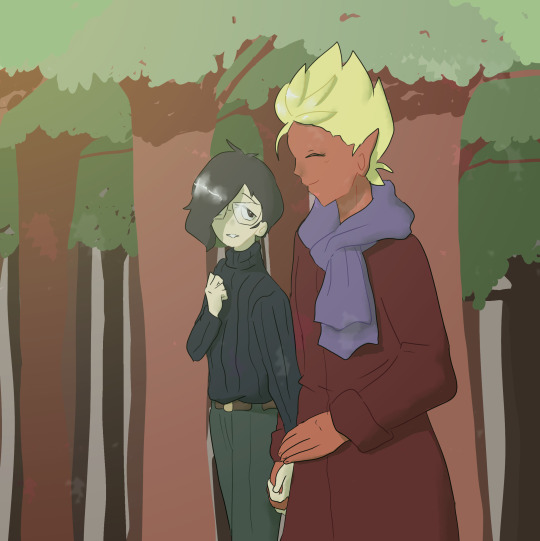
They’re probably talking about how shit ancient enma was..
#yokai watch#yo-kai watch#youkai watch#yo kai watch#lord enma#enma daiou#lucas schiffer#mao hikage#my art
49 notes
·
View notes
Text
Hoozuki: We're back. Enma Daiou was banned from the chicken shack, so we had to go out of town to get some.
Enma Daiou: Well, they shouldn't say "all you can eat" if they don't mean it.
Hoozuki: Enma Daiou, you ate a chair.
#source: the amazing world of gumball#hoozuki no reitetsu#hozuki no reitetsu#hoozuki#enma daiou#incorrect quotes#the amazing world of gumball
14 notes
·
View notes
Text

*Just two close friends holding hands UwU. So what if one of them is human and the other is the king of all yokai?
*At the very least Keita and Enma are amazingly close friends. (I love that for both of them)
#yokai watch#king enma yokai watch#amano keita#nate addams#keita amano#enma daiou#I use tumblr to post my comfort characters/ships because fear
49 notes
·
View notes
Photo
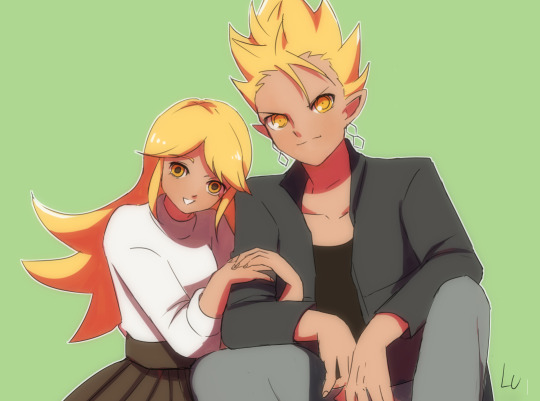
I love their dynamics ;;;
23 notes
·
View notes
Text
Fighter Number 2 Bring Death to All!!!
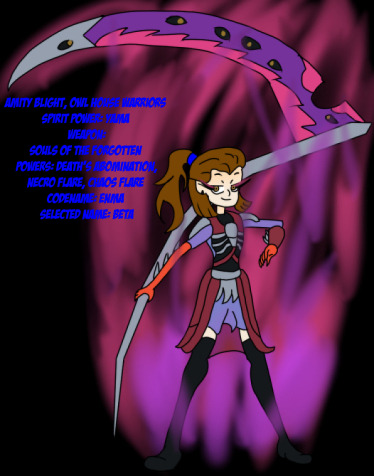

#amityblight#amity blight#the owl house#owlhousefanart#fanfiction#fanfic#lumity#owl house#digitalart#disney#fantasy#hero#necromancy#necromancer#death god#goddess of death#scythe#enma daiou#owl house fanfiction#theowlhousefanart#owl house amity#toh amity#digital art#digitalillustration#digitaldrawing#purple#chaos magician
5 notes
·
View notes
Text
The single most amusing scene I've seen all week.

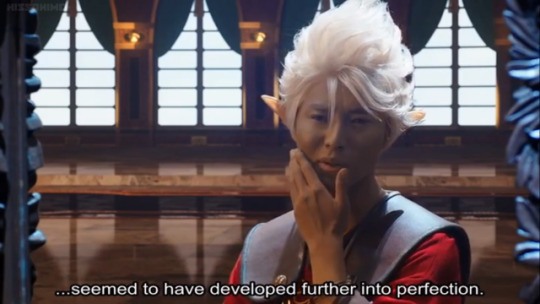
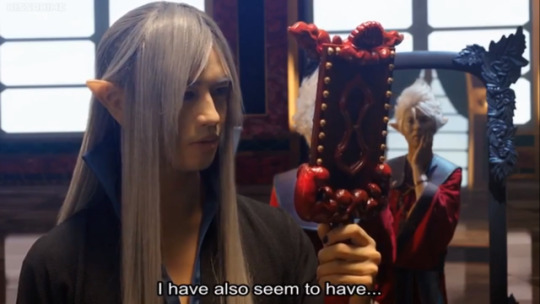


Go watch the 3rd Yo-kai Watch movie, guys.
#yo-kai watch#yokai watch#yokai watch enma#yokai watch enma daiou#yokai watch nurarihyon#yokai watch zazel#lmao idk their english names
85 notes
·
View notes
Photo
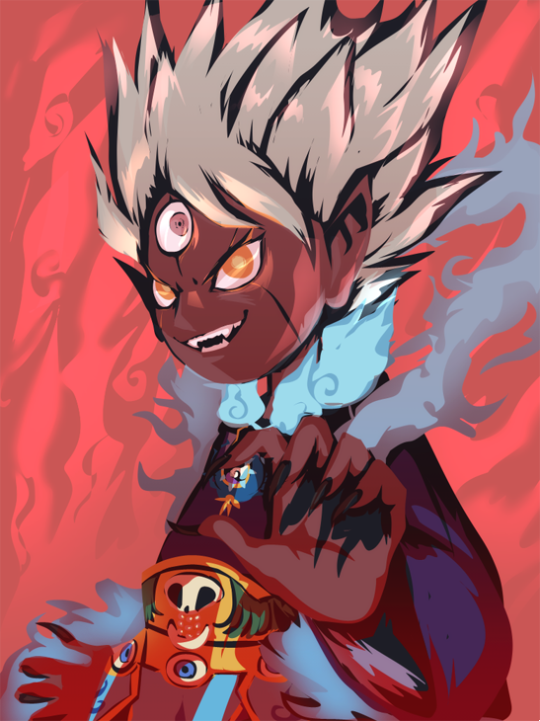
Kakusei Enma/Enma Awoken!
intense lord of hell is here.
163 notes
·
View notes
Photo

ENMA DAIOU
Archetype : Deity
The fifth out from ten judges of the hell’s courtroom, yet the one with the highest authority. He oversees the cycle of reincarnation and passes judgement on all the deceased people. People with merit will have better future life while people with misdeeds will be sent to hell or have miserable future life after rebirth.
He decides which realm the spirit will be after they die. Either they became another human, animal, asura or turn into devas/God, or if they’re misbehaving, they’ll be either hungry ghosts or tortured in hell.
A syncretistic deity who originated from India as Yama, then exported and incorporated with Taoism and China as Yanluo Wang. In Japan and Korea, he’s known as Enma Daiou (Great King Enma) and Yeom-ra Daewang
29 notes
·
View notes
Note
I was wondering how y'all would handle Lucas's death, considering Enma Daiou's "Humans and yokai are cut from the same cloth" bs. Keep it up!
ngl we’ve kinda stopped looking into canon after Shadowside, so y’know
Old Enma’s said some things certainly, he may be a hypocrite or he’s changed his mind before death. That’s for you to see and make your decisions.
4 notes
·
View notes
Photo
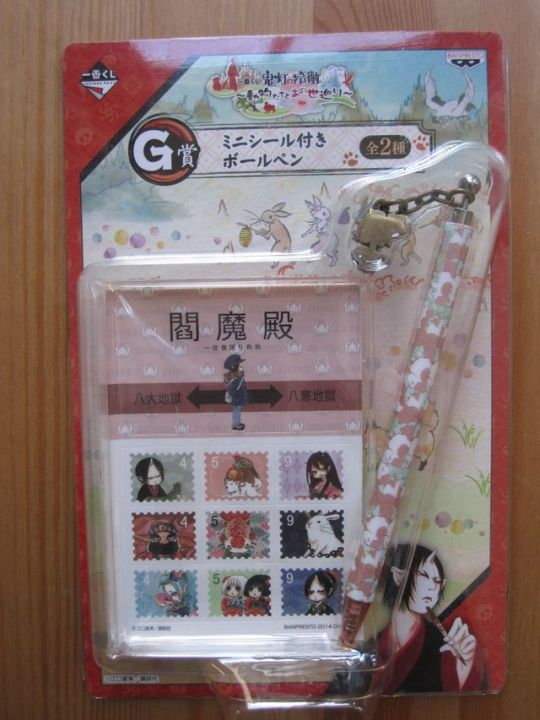
Item: Hoozuki no Reitetsu - Chou, Enma Daiou, Gozu, Hoozuki, Ichiko, Kakisuke, Karashi, Kingyosou, Mezu, Miki, Nico, Okou and Peach Maki Ball Pen and sticker set made by Banpresto
Sale price: 10 euro
Shipping costs: Medium cost shipping in an bubble mailer. When you are interested in an item on this blog, please message me for an exact estimation to your country! Shipping is from the Netherlands, Europe.
All items are standard shipped without tracking or insurance. I can offer options for both, but keep in mind the shipping costs will get higher.
I’m also open for trades, so feel free to ask me for a list of items I’m looking for!
My other Tumblrs:
Fashion Maakie: https://maakie.tumblr.com/ Cosplay Maakie: https://cosplaymaakie.tumblr.com/
#hoozuki no reitetsu#hoozuki#chou#enma daiou#kingyosou#peach maki#kakisuke#gozu#ichiko#karashi#mezu#miki#nico#okou
1 note
·
View note
Photo
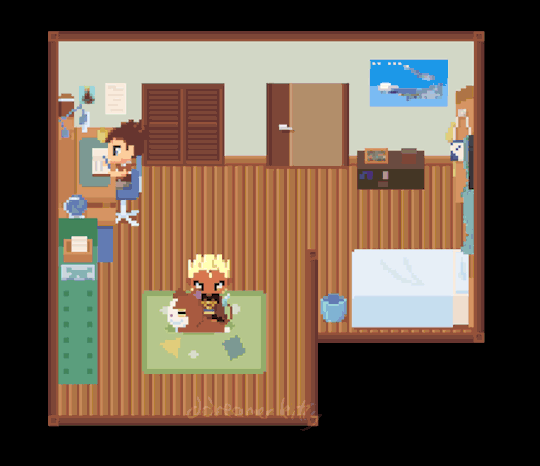
Keita-kuuuuun’s room feat. sleepy cat and yokai king
#yokai watch#yo kai watch#youkai watch#yo-kai watch#keita amano#nate adams#jibanyan#lord enma#enma daiou#my art#pixel art#sprite art
72 notes
·
View notes
Text
Yu Yu Hakusho 3rd Popularity Poll (WSJ, 1994)
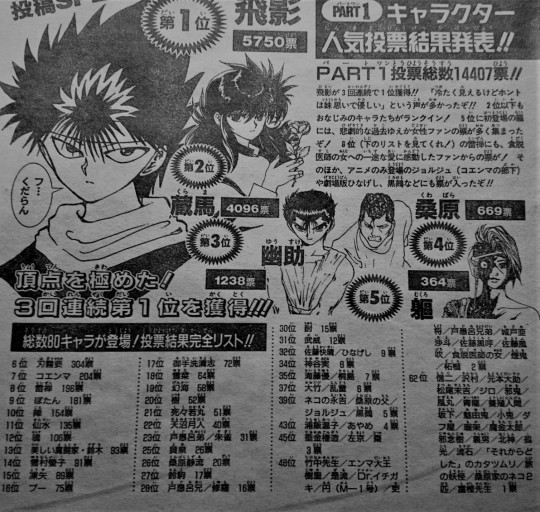
In the comics, the characters popularity voting results were listed twice (vol. 7, pp. 90-91 & vol. 12, pp. 148-149) in addition to a poll regarding the best battles (vol. 17, pp. 185-187). In 2018, to celebrate its 50th anniversary, JUMP made a new poll with the TOP 10 YYH Best Scenes selected by the readers.
This 3rd popularity poll was carried out at the end of the series (1994) and was published only in the magazine. It’s cool to see so many minor characters getting votes, even Togashi got a vote:
Announcement of popular voting results!!
Total number of votes: 14,407!!
Hiei won first place for three consecutive times!! There were many voices saying "he looks cold, but is really kind to his sister"!! Familiar characters are ranked in 2nd place and below! Mukuro, who made her debut at 5th, received a lot of votes from female fans, probably due to her tragic past! Raizen at 8th place (see the list below!) also received votes from fans who were impressed by his wholehearted love for “kuda kusushi” (fictional doctors who practiced medicine by ingesting rotting flesh of humans who had died of diseases in order to make their own body to produce antibodies and use their flesh and blood as vaccines)! In addition, there were votes for Jorge (Koenma’s subordinate), which appeared only in the anime, and Hinageshi and Kuronue from the movie!!
🥇 Hiei reached the top! 3rd consecutive 1st place!! (5,750 votes)
🥈 Kurama (4,096 votes)
🥉 Yusuke Urameshi (1,238 votes)
4th Kazuma Kuwabara (669 votes)
5th Mukuro (364 votes)
6th Hagiri Kaname (304 votes)
7th Koenma (204 votes)
8th Raizen (196 votes)
9th Botan (181 votes)
10th Jin (154 votes)
11th Sensui (135 votes)
12th Karasu (106 votes)
13th Beautiful Suzuki (93 votes)
14th Keiko Yukimura (91 votes)
15th Toya (89 votes)
16th Puu (75 votes)
17th Kyoshi Mitarai (72 votes)
18th Yukina (64 votes)
19th Genkai (58 votes)
20th Itsuki (52 votes)
21st Shishiwakamaru (51 votes)
22nd Tsukihito Amanuma (40 votes)
23rd Younger Toguro / Suzaku (31 votes)
25th Yomi (26 votes)
26th Shizuru Kuwabara (20 votes)
27th Rinku (17 votes)
28th Toguro Ani / Shura(16 votes)
30th Chuu (15 votes)
31st Bui (12 votes)
32nd Kaisei Sato / Hinageshi (9 votes)
34th Minoru Kamiya (8 votes)
35th Yuu Kaito / Kirishima (7 votes)
37th Otake / Rando (6 votes)
39th Eikichi (cat) / Kuawabara’s father / Jorge / Kuronue (5 votes)
43th Atsuko Urameshi / Ayame (4 votes)
45th Gonzo Tarukane / Sakyo / Natsume (3 votes)
48th Takenaka-sensei / Enma Daiou / Juri / Zeru / Dr. Ichigaki / En (M1) / Risho / The Toguro Brothers / Asato Kidou / Kuroko Sato / Fubuki Sato / Kuda Kusushi / Enki / Zakuro (2 votes)
62nd (1 vote):
- Shinji (the boy from Chapter 6 - “The Lonely Journey”)
- Sawamura (Kuwabara’s friend)
- Daisuke Motomoto (gang leader from Kasanegafuchi Junior High; Chapters 8 & 9 - “The Temporary Resurrection”)
- Matsuo Suekichi (Yusuke's friend from primary school who took up boxing, from Chapter 15 - “Just One Win!!”)
- Jiro (the dog from Chapter 4 - “The Old Dog and the Boy”)
- Jyaki (the first youkai Yusuke apprehended after he revived)
- Kazemaru
- Seiryu
- Harvested humans (from The Four Saint Beasts Arc)
- Sakashita (Gonzo Tarukane’s servant)
- Miyuki
- Koto
- Ticket scalper (the youkai who sells tickets in the Dark Tournament)
- Ruka
- Makintaro
- Janenju (Kurama’s Sinning Tree)
- Uraotoko (Reverse Man, Itsuki’s pet)
- Hokushin
- Kokou (Enki’s wife)
- Sasuga (Rinku’s love interest)
- The snail from the final volume (vol. 19, p.86. Who voted for him? 😂)
- Traveling Youkai (from Chapter 171 - "Reviving The Detective Business”)
- Kuwabara’s Two Cats
- Togashi 😂
#Yu Yu Hakusho Polls#3rd Character Popularity Poll#kurama#hiei#yusuke#kuwabara#yuyuhakusho#weekly shounen jump#yoshihiro togashi
52 notes
·
View notes
Text
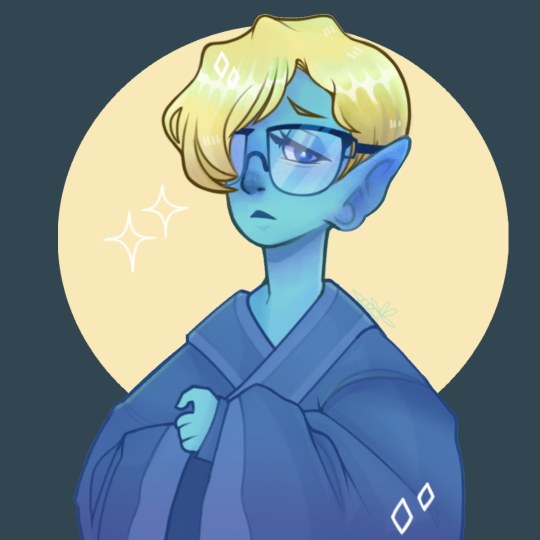

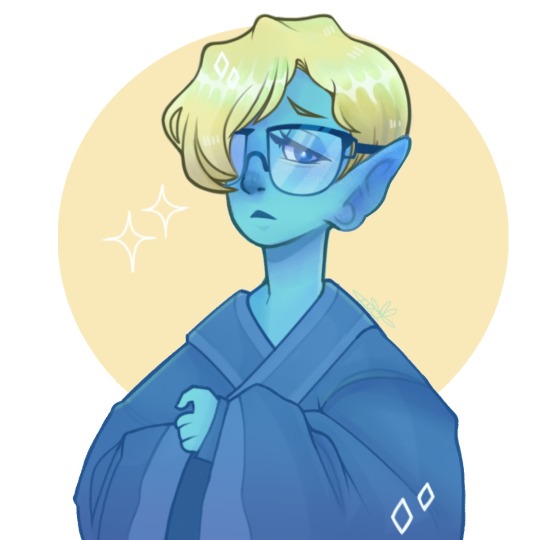
I love that this random character is canonically Enma's brother and there is almost nothing about him XD. I love yokai watch so much ♡
-
Had this idea of how Lucas would look like in his yokai form and needed to draw it ASAP.
25 notes
·
View notes
